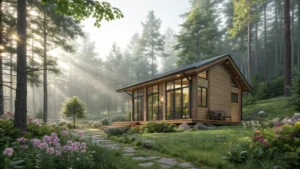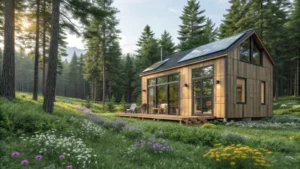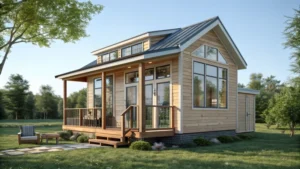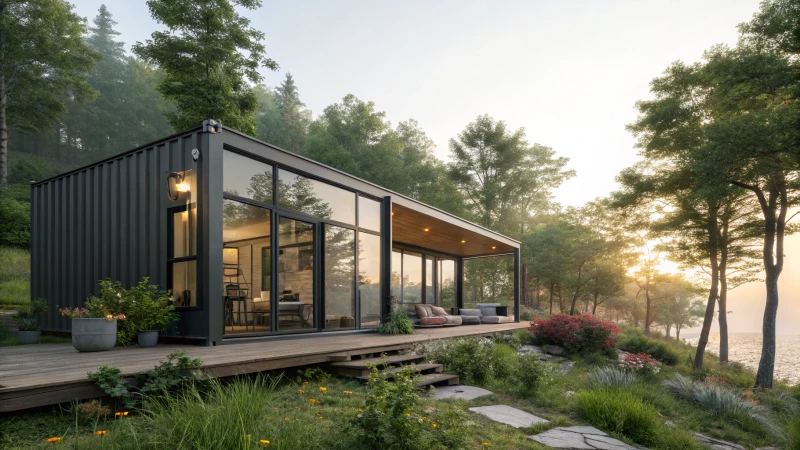
I’ve always been fascinated by the charm and practicality of shipping container homes.
Shipping container homes can be a smart investment due to their cost-effectiveness and sustainability. They repurpose used steel containers, reducing waste, and offer customizable designs. However, challenges such as regulatory compliance, insulation needs, and market perception must be considered to ensure a successful investment.
While the initial appeal of shipping container homes is undeniable, understanding the full scope of their benefits and potential pitfalls is crucial for making an informed investment decision. Let's explore the key factors that can influence whether these homes are a worthwhile endeavor. For me, it started as a curiosity, a what-if scenario that quickly spiraled into a deep dive into the world of modular architecture. I remember visiting a friend’s eco-friendly resort and marveling at how these sturdy boxes could be transformed into luxurious retreats. It got me thinking about all the possibilities—not just in design but in redefining what sustainable living could look like. As exciting as it is, though, diving headfirst into this venture requires a solid grasp of both its promises and its challenges.
Shipping container homes are always eco-friendly.False
Not all container homes use sustainable practices or materials.
Regulatory compliance is a challenge for container homes.True
Zoning laws and building codes can complicate container home projects.
Why Are Shipping Container Homes Cost-Effective?
I remember the first time I stumbled upon a shipping container home, it felt like finding a hidden gem in the world of real estate. I was captivated by their blend of simplicity and innovation. But what makes them truly cost-effective?
Shipping container homes are cost-effective due to their use of recycled materials, quick construction time, and design flexibility. By repurposing containers, they cut down on material costs, and their prefab nature speeds up the building process, all while allowing for unique, tailored designs.

Affordability Through Recycled Materials
One of the primary reasons shipping container homes are cost-effective is the use of recycled steel containers. These containers, which might otherwise go to waste, are repurposed, reducing costs associated with traditional building materials. Using a standard 40-foot container as a base structure can drastically lower expenses compared to constructing a similar-sized building from scratch.
I'll never forget the time I saw a 40-foot container transformed into a cozy living space—it was like witnessing the ultimate form of upcycling.
Reduced Construction Time and Labor
Shipping container homes can be assembled much faster than conventional homes. The prefabricated nature of these containers means that the basic structure is already in place. This reduces labor costs and speeds up project timelines significantly.
A streamlined construction process translates into cost savings1 for both builders and homeowners. I once spoke with a builder who told me how this speed allowed him to take on more projects, ultimately saving both time and money.
Customization Potential
Although customization can add to initial costs, the inherent flexibility of shipping container homes allows for unique design opportunities that can be tailored to specific needs without excessive expense. Modifications like cutting in windows or doors can be done efficiently without compromising structural integrity. Plus, combining multiple containers can create larger, more versatile spaces—a feature that always sparks my creativity.
| Feature | Traditional Homes | Container Homes |
|---|---|---|
| Material Cost | High | Lower |
| Construction Time | Longer | Shorter |
| Customization | Limited | Highly Flexible |
Sustainability Benefits
Sustainability is not just a trend; it's a lifestyle choice I wholeheartedly embrace. Shipping container homes align perfectly with this ethos by repurposing materials and reducing environmental impact. With proper insulation and energy-efficient installations, these homes can cut utility costs dramatically.
Investing in sustainable solutions like solar panels or rainwater harvesting systems can enhance savings over time.
Regulatory Considerations
Navigating local building codes and zoning laws can impact costs. However, working with experienced contractors familiar with these regulations can mitigate unexpected expenses. Consulting local authorities early in the planning process is crucial to ensure compliance with area-specific regulations specific to your area2. This foresight helps avoid costly legal or construction delays.
Understanding these factors can help anyone considering a shipping container home make an informed decision about its cost-effectiveness relative to their unique needs and circumstances.
Shipping container homes use recycled steel containers.True
Recycled steel containers are a key component, reducing material costs.
Customization always increases the cost of container homes.False
While customization can add costs, it offers flexibility without excessive expense.
How Sustainable Are Shipping Container Homes Really?
Ever thought about living in a home made from shipping containers? They seem eco-friendly and affordable, but are they truly sustainable? Let's explore.
Shipping container homes recycle old containers, cutting down waste and resource use. Their sustainability hinges on factors like insulation, structural changes, and local laws. Done right, they offer an eco-friendly housing solution.

Environmental Impact of Shipping Container Homes
When I first came across the idea of shipping container homes, I was instantly intrigued by the concept of turning something as mundane as a steel box into a cozy living space. These homes take decommissioned containers and transform them into livable spaces, significantly reducing the need for raw building materials. I've seen many enthusiasts incorporate renewable energy solutions3 to power these homes, which only adds to their eco-friendly appeal.
Insulation and Energy Efficiency Challenges
The first time I stepped inside a shipping container home, it was summer, and the temperature inside could have melted ice cream in seconds. It turns out, these steel containers are great at conducting heat and cold, making proper insulation a must. Imagine trying to sleep in what feels like an oven or a freezer! Using high-quality insulating materials can help maintain a comfortable interior climate. Here's a quick breakdown of different insulation options:
| Insulation Type | Pros | Cons |
|---|---|---|
| Spray Foam | High efficiency, airtight | Expensive |
| Fiberglass | Cost-effective | Moisture absorption issues |
| Rock Wool | Fire-resistant | Higher cost |
Navigating Regulatory and Zoning Laws
I remember when my friend tried to set up a container home in a picturesque town, only to hit a wall with local regulations. Zoning laws can be tricky and may restrict the use of shipping containers for residential purposes due to concerns over aesthetics or durability. Engaging with local authorities4 early on is like getting the map before starting an adventure—it helps avoid costly detours.
Potential for Customization and Design Innovation
One of the most exciting aspects of shipping container homes is their adaptability. I’ve seen designs that range from minimalist studios to luxurious multi-container setups perfect for luxury glamping sites5. While customization can increase initial costs, it allows for creating unique spaces that cater to niche markets.
Long-term Durability Concerns
Despite their rugged exteriors, shipping containers need regular TLC to stay in top shape. I've learned that rust and corrosion are common foes. Regular inspections and protective coatings are vital to prolong their lifespan. Commitment to sustainable maintenance practices6 ensures these homes remain welcoming for years to come.
Shipping container homes reduce industrial waste.True
They repurpose decommissioned containers, decreasing raw material demand.
Shipping container homes are naturally well-insulated.False
Containers are steel, which conducts heat and cold, needing extra insulation.
What Are the Common Design Challenges in Container Homes?
Ever dreamt of living in a container home? Before diving in, let's chat about some real-life design challenges you might face.
When building container homes, you’ll face challenges like insulation, structural changes, regulatory hurdles, and aesthetic balance. Tackling these issues requires strategic planning, skilled craftsmanship, and often a bit of creativity to ensure comfort and style.
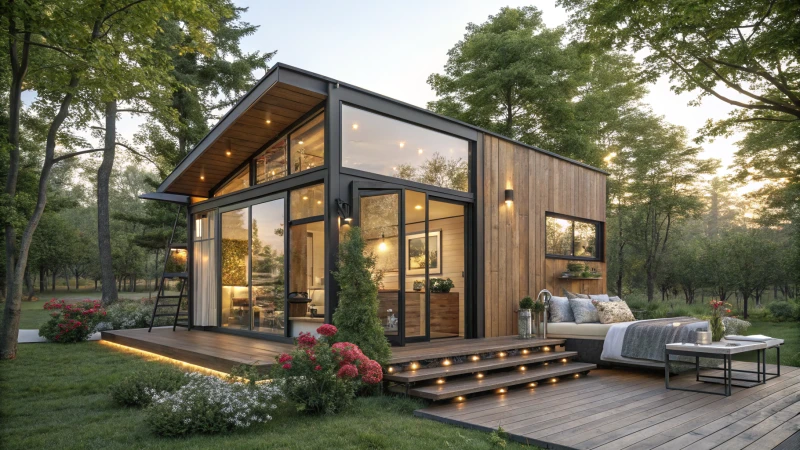
Structural Modifications
Imagine transforming a shipping container—a solid box of steel made to withstand ocean voyages—into a cozy home. I remember when I first started this journey, cutting out windows and doors7 felt like performing surgery on steel. Each cut risked weakening the structure, but with careful reinforcement, I turned potential pitfalls into solid success. Ensuring stability while modifying containers is crucial for safety and longevity.
Insulation Needs
I'll never forget the scorching summer day when I realized just how important insulation was. Containers, with their metal walls, act like saunas in heat and iceboxes in cold. Finding the right insulation materials, like spray foam or rigid foam8, was a game-changer. It was all about balancing budget with effectiveness to maintain a comfortable climate inside.
Regulatory Compliance
Navigating building codes is like solving a complex puzzle. I learned this the hard way during my first project. Some regions have strict regulations that seemed almost designed to trip me up. Getting permits became a lesson in patience, but consulting with local authorities early on saved me from costly setbacks.
Aesthetic Considerations
I love the industrial charm of a container home, but not everyone shares this taste. My friend wanted a more traditional look for her container home, so we explored cladding9 options. It added complexity and cost but was worth it for her vision. Balancing aesthetics with functionality is key.
Moisture and Ventilation
There was this one rainy season when moisture became my nemesis. Containers can trap dampness, leading to rust or mold—definitely not what you want in your dream home. Proper ventilation is vital; windows and exhaust fans can make all the difference in maintaining air quality and preventing damage.
| Challenge | Solutions |
|---|---|
| Structural Modifications | Reinforce cut areas |
| Insulation Needs | Use spray or rigid foam |
| Regulatory Compliance | Consult local authorities |
| Aesthetic Considerations | Use cladding or siding |
| Moisture & Ventilation | Install windows or fans |
Understanding these challenges can guide you towards successful design choices that optimize function without sacrificing style or safety in container homes.
Structural modifications can compromise container integrity.True
Cutting for windows or doors weakens containers, needing reinforcement.
All regions allow container homes without restrictions.False
Local building codes and zoning laws often restrict container homes.
Are There Regulatory Barriers to Building Shipping Container Homes?
Ever dreamt of transforming a simple shipping container into your dream home? It's a thrilling idea, but the road to reality is paved with regulations.
Yes, there are regulatory barriers to building shipping container homes, including zoning restrictions, building codes, and permit requirements. Compliance varies by location, and consulting local authorities is essential to avoid costly setbacks.
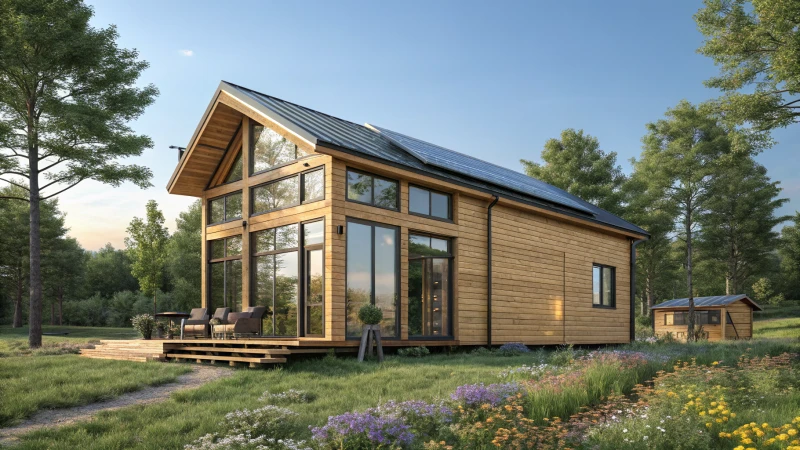
Understanding Zoning Restrictions
I remember the first time I considered using a shipping container for a home; it seemed perfect until I hit the zoning restriction wall. Zoning laws are like the unsung directors of where and how our lives unfold—they dictate how land can be used in different regions. Many areas have specific restrictions on unconventional housing10 like shipping container homes. These laws can limit where you can place your home, often requiring it to fit within predefined residential areas.
Navigating Building Codes
Building codes are another puzzle piece in this complex process. They ensure safety and durability, which means your container home must meet requirements that could include insulation, foundation, and structural stability. I once read about someone who didn't check if their area had guidelines specific to container homes11 and had to redo much of their work—definitely not something you want to go through.
Permit Requirements
Permits can be a real patience-tester. The process can be lengthy and complex, depending on local regulations. Some regions may even require specific environmental impact assessments12 due to the materials used in shipping containers. It reminds me of the time I applied for a permit and spent what felt like eons waiting—it's definitely worth starting early.
| Regulatory Aspect | Potential Challenge | Possible Solutions |
|---|---|---|
| Zoning | Restricted areas for placement | Engage with local planners early |
| Building Codes | Compliance with safety standards | Hire experienced contractors for modifications |
| Permits | Lengthy and complex processes | Start application early to account for delays |
Consulting Local Authorities
I can't stress enough the importance of this step—consult with local authorities before diving into your project. It's like having a map for a treasure hunt; it helps clarify what is needed to comply with all local laws and codes. Engaging with a consultant familiar with local housing regulations13 can also be beneficial.
The Role of Aesthetics
And don't forget about aesthetics! In some cases, community aesthetic standards can impact approval processes. Shipping container homes must often blend with the surrounding architecture to gain acceptance from neighborhood associations or councils.
Understanding these barriers is crucial for anyone looking to build a shipping container home. Careful planning and consultation can help navigate these challenges effectively. Remember, every step you take is one step closer to realizing your unique living space dream.
Zoning laws often restrict shipping container homes.True
Zoning laws can limit where unconventional homes are placed, affecting container homes.
All regions have specific guidelines for container homes.False
Not all regions have specific guidelines; it varies by location and local regulations.
Conclusion
Shipping container homes offer cost-effective, sustainable housing options but face challenges like regulatory compliance, insulation needs, and market perception that potential investors must navigate carefully.
-
Discover how minimizing construction time can lead to significant savings on labor and overall expenses. ↩
-
Gain insights into how navigating local regulations can influence project costs and timelines. ↩
-
Explore how renewable energy sources can make container homes more sustainable by reducing reliance on fossil fuels. ↩
-
Understanding local zoning laws is crucial to ensure your container home project adheres to regional regulations. ↩
-
Discover examples of upscale glamping accommodations that utilize shipping containers for innovative designs. ↩
-
Learn how regular maintenance can enhance the longevity and sustainability of container homes. ↩
-
Learn about methods to reinforce container home openings for safety and structural integrity. ↩
-
Find optimal insulation materials to maintain comfortable temperatures inside your container home. ↩
-
Explore various cladding materials to enhance the aesthetic appeal of container homes. ↩
-
Explore zoning restrictions that affect where you can build a shipping container home. ↩
-
Learn about specific building code requirements for container homes. ↩
-
Understand the permit process for constructing a shipping container home. ↩
-
Find out how consulting local regulations can streamline your project. ↩



